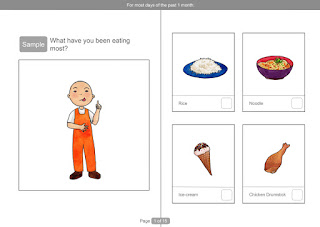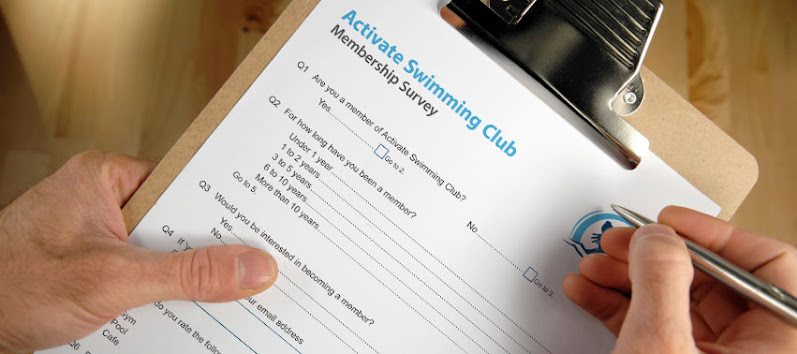Evaluation:
Wednesday 20 January 2021
Final Version Of My Film & Evaluation
Evaluation:
Tuesday 19 January 2021
Research Technique
Research Technique - Questionnaire:
A questionnaire is a list of questions with a choice of answers. The purpose of a questionnaire is for survey or statistical study based on a certain topic.
Questionnaires are a good research technique because they're quick to create, quite cheap to make and it allows you to get a wide variety of answer from large amounts of people. This allows you to collect data from all types of people so your results will have variety and balance amongst everyone.
Different Types of Questionnaires:
- Structured Questionnaire
- Unstructured Questionnaire
- Open Ended Questionnaire
- Close Ended Questionnaire
- Mixed Questionnaire
- Pictorial Questionnaire
 |
| An Example of a Structured Questionnaire |
 |
| An Example of a Unstructured Questionnaire |
 |
| An Example Questions used in Open Ended Questionnaires |
A Open Ended Questionnaire is a free form survey questions that lets people answer in an open text format, allowing the responses to be their complete knowledge and understanding. Resulting in the answer not being a set of options, all of them being unique and personal.
The idea of this questionnaire is that it allows whoever is answer to give a detailed or not response and allows data from these questionnaires to be unique exploration data.
 |
| An Example of a Closed Ended Questionnaire |
A Closed Ended Questionnaire is a survey with limited options, this allows you to get important straight forward information depending on the subject. This can be key to research for certain topics.
 |
| An Example of a Mixed Questionnaire |
A Mixed Questionnaire contains closed and open ended questions, typically used for social research.
 |
| A Example of a Pictorial Questionnaire |
A Pictorial Questionnaire is the type of survey used for promotional use to fin out the interest of the public.
Typically this type of questionnaire has a higher response rate compared to other question types because people are more likely to choose a questionnaire with pictures rather than reading the question themselves.
What you should include when creating a questionnaire?
Validity - The validity is how accurate the data collected is measured. It is a degree to which the researcher has measured what they have set out to measure. Validity is done to provide accurate answers to the research that was asked. Types of Validity : Content validity, face validity, criterion validity, predictive validity and construct validity.
Reliability - The reliability is how an instruction would give the same results if the measurements were to be taken again under the same conditions. You would have to use the same unit of measurement with all the questionnaires that you want to use reliability and to have the same questions otherwise the data is useless and can not be used to compare and analyse.
Triangulation - Triangulation is the use of multiple sources of data or multiple approaches of analysing data to enhance the credibility of the research study" (Salkind, 2010). Triangulation helps add more data to back up your data that you have collected from the questionnaire.
Pilot Study - The Pilot Study is the stage that identifies potential problem areas. It can help others become familiar with potential problems in future projects. This stage is usually used in interviews.
Sample - A sample is when a group or selective group of the population, that you want to collect data from with the use of a questionnaire. this sample is like a practise group to run all your tests through first before everyone else. It is also a good idea to have a sample because it's good to have data to compare to your new data, and then show the progression.
Types of Sampling Styles:
Random Sampling - This style of sampling is simply the selection of randomly picking individuals from the population. This gives the data results to be as neutral as possible because nothing was staged, meaning all the data is randomly accurate. This is the least complicated sampling style because it doesn't require much preparation before hand.
Stratified Sampling - Stratified Sampling is when a group of individuals with one or more common interest/attribute are picked to take the questionnaire. With people being picked, it means that throughout the process of the questionnaire there may be less complications rather than the random sampling because the group of people know that they are going to be doing a questionnaire, compared to the random sampling style.
Systematic Sampling - This sampling style is when you have a selected list of members from the public, however every Nth name selected is then involved in the questionnaire
Convenience Sampling - This sampling style is only available for a small group of people who were specifically targeted to take the questionnaire. So the question may be targeted to that certain type of group of people. However this method isn't used very often as it doesn't give a wide variety of results.
Quota Sampling - This sampling style allows the researcher creating the questionnaire to choose specifically who they want to answer certain questions in the questionnaire. They also get to choose how many people are allowed to answer the questionnaire.
Purposive Sampling - This sampling style is a type of non-probability sample. The main objective is to produce a sample that can be logically assumed to be representative of the population. (Lavrakas, 2008)
Diagram Example:
Types of Questionnaires Based On Distribution:
Mail Questionnaire - Mailing questionnaires are physical copies of questionnaires that are mailed out to reach a wide range of people quickly. Typically the response rate for mail questionnaire's is lower that other options as most people forget about them, reminders can be made to improve this. A positive factor about mail questionnaires is that they don't depend on technology and wifi, so it can be easier for some people to complete. Also people partaking in the questionnaires are giving more time than they normally would be to think about their answers. However a negative aspect of mail questionnaire's is that the response rate is lower than other types of questionnaires so it can lead to a lot of odd numbers and missing answers when it comes to looking at the results of the questionnaire.
Telephone Questionnaire - This type of questionnaire delivery is a good idea if you need quick results, as you're able to get immediate answers from participants. It is also very beneficial to people who are unable to complete written questionnaire physically and visually, so this gives more options and allows a wider range of people. However negatives from this type of delivery is that your questions have to be very clear and straight to the point as not many people will willingly sit and answer your questions if it has no benefit to them, so making sure your questions are straight to the point and you don't waste people time.
Computer Questionnaire - Computer questionnaires are another way of collecting data from a survey. However the method used in this one is that the questionnaire is available online. This technique can be useful for people who are socially anxious because it requires little to no contact with another person. With that being said, it can have limits to people who struggle to access the internet and technology so this type of questionnaire delivery should be used when trying to reach and get information from a specific group of people, aiming towards people who have access to technology.
In-House Questionnaire - This questionnaire delivery is in person, so typically the questions are asked at home or in the work place. Benefits of this method is that communication is available allowing the people participating in the questionnaire to ask questions if they're unsure on certain parts of the survey, this wouldn't be an option with other delivery methods. However a disadvantage of this method is that is can be costly as you have to pay the person asking the questions as well as travel to everyone involved so it can be more expensive than other options. As well as this, it can be a slower process when you consider travel, having conversations with others, it can all add up in the end.
Referencing:
C N Trueman "Unstructured Questionnaires"
historylearningsite.co.uk. The History Learning Site, 22 May 2015. 9 Dec 2020.
Lavrakas, P. J. (2008). Encyclopedia of Survey Research Methods. Thousand Oaks California: SAGE Publications.
Kaplan, J. (2020, July 21st). Better Evaluation. Retrieved from Better Evaluation: https://www.betterevaluation.org/en/evaluation-options/telephone_questionnaires
Monday 11 January 2021
Practical Skills Evaluation
Evaluation: Over the entire unit my practical skills and knowledge of these skills have also increased a lot since the beginning of the year...
-
Split Screen Video: This is my attempt at creating a split screen video, the video doesn't have any meaning to it, it's just a seri...


